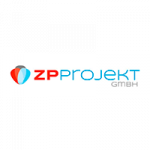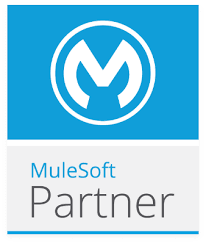MuleSoft Advantages:
How to use the Integratiosplattform
Be able to strengthen your customer relationships
Use individual MuleSoft solutions
We like to make our customers happy




































Take advantage of MuleSoft
You have chosen to develop your business and keep it at the cutting edge of technology. This is where we at Artemis Innovations can help you. We work with you to develop a scalable integration framework that enables you to deliver connected experiences to your customers, capture data sets, and automate processes.
By combining the functionality of the Anypoint platform with the expertise of our consultants, we manage to find exactly the solution you need.

We can help you to implement your project faster. Our experienced MuleSoft consultants can help you design and implement the right API architecture. With training, your team can then continue to use and manage the solution on their own.
MuleSoft Integration Pattern
One approach that has worked for companies the longest and to some degree to date is the implementation of “point-to-point integration.”
This method requires developers to create custom codes between multiple components within the business environment. The advantage of this approach is that it allows fast and easy communication between a few applications, but it cannot scale and is therefore not future-proof. Point-to-point integration leads to a vulnerable and convoluted system and is difficult to maintain.
Another approach is API-based connectivity. The main goal of this methodology is to enable the reuse of integration workflows by many parties within the enterprise integration platform. Thanks to this reuse of existing logic (implemented feeds), developers can implement their logic more safely and quickly, resulting in a shorter time-to-market.
Specification of the MuleSoft integration patterns
There are many things to consider when deciding on an integration pattern. We break down the different integration patterns for you:

Data migration
Data migration is the process of moving data from one location to another, from one format to another, or from one application to another. Generally, this is the result of implementing a new system or storage location for the data.

Broadcast Pattern
Broadcast can also be referred to as “one-way synchronization from one to many”. It is the continuous transfer of data from a single source system to many target systems, in near real-time. Normally, “one-way sync” implies a 1:1 relationship, and for us it is just an instantiation of the broadcast pattern, which is a 1:many relationship.

Aggregation pattern
The value of the aggregation pattern is that it allows you to extract and process data from multiple systems in a single application. This means that the data is up to date when needed, is not replicated, and can be processed or merged to create the desired data set

Bi-directional Sync
Bidirectional data integration combines two data sets in two different systems so that they behave as a single data set without having to exist as different data sets. For this type of integration, different tools or systems must be available to perform other functions with the same data set.

Correlation
The pattern for integrating correlation data is a design that identifies the intersection of two data sets and performs bidirectional synchronization of that data set only if that element occurs naturally in both systems. This is similar to the way the bidirectional pattern synchronizes the union of the data set with the scope and the correlation synchronizes the intersection.
How to use MuleSoft optimally
MuleSoft Anypoint Platform: Your ticket to faster delivery of a connected experience
MuleSoft Integration Solutions
The need for integrations is growing rapidly: Data and its use have become a competitive advantage. Integration solutions are needed to agilely create reusable interfaces and keep everything under control. Let’s get an overview of some of Mulesoft’s integration solutions:

SaaS application integration
SaaS integration, or SaaS application integration, involves connecting a SaaS application to another cloud-based application, cloud services, or on-premise software via application programming interfaces (APIs). Once the connection is established, the application can query and freely exchange data with the other application or the local system.

Solutions for B2B/EDI
EDI stands for Electronic Data Interchange and is the exchange and processing of documents electronically using a standard format. It enables accurate and reliable transfer of data between your systems and those of your trading partners. EDI integration means the transfer, mapping and translation of EDI data to and from business applications and is an essential part of increasing efficiency in companies.

Mobile device integration
Mobile integration connects different applications and devices to achieve seamless data exchange and optimized workflows. It helps to increase flexibility and improve efficiency of various business processes.

Data integration
Data integration is a group of technical and business processes – such as ETL, data replication, and virtualization – that combine data from disparate sources into a meaningful and valuable data set for business intelligence and business analytics.

ServiceNow Integration
The ServiceNow platform is based on a service-oriented architecture (SOA) in which all data objects can use Web services to access bidirectional integration at the data level. The interface is also direct and dynamic, as all changes to existing objects and new objects are automatically published as a Direct Web Service .

Salesforce Integration
Salesforce integration is the process of integrating your Salesforce CRM with other systems and applications, such as ERP, marketing automation, HCM, etc. There are many reasons why companies would want to integrate Salesforce with their other systems.

The advantages of MuleSoft
When successful companies around the world declare that a platform is world-class – and industry analysts agree – you know you have a solution that delivers on its promise. MuleSoft ‘s Anypoint platform offers a wide range of features that impact all areas of the business. And it contributes to results that are simply astounding:
Improved
Agility
Easily unlock data with Anypoint Platform’s pre-built connectors and automatic data mapping. Recommendations based on machine learning are improving over time.
Reduced risk of security breaches
MuleSoft’s Anypoint platform includes advanced security features as standard with end-to-end governance to ensure compliance with local, regional and industry regulations. The solution enforces global access control and threat protection at every system level, ensuring the confidentiality and integrity of the information you share.
Faster connection to core systems
MuleSoft Anypoint allows you to quickly and easily introduce new systems, software versions, devices and data sources. This allows you to react quickly to changing market conditions and take advantage of time-critical new opportunities.
Improved Cooperation
Give your team secure access to complete and accurate customer information. MuleSoft Anypoint brings together disparate customer systems and data sources to create a 360-degree customer view that enables you to deliver personalized experiences, anticipate future needs and improve customer engagement.
Advantages in the business world

Scalability
The main reason why MuleSoft is so popular is because of its integration capabilities. Even if you have a legacy system, you can connect it to SaaS products and system APIs using Mule integration. This allows you to scale your system without having to completely overhaul it.
API-driven connectivity also allows you to expand into new markets by unlocking your data and infrastructure to integrate the systems you need.

Performance
MuleSoft boosts the performance of individual developers as well as your entire organization. Development time is reduced because your teams can keep reusability in mind and use a unified platform for the entire API creation process.
As for your business, you’ll be able to increase the pace of innovation because you’ll be able to connect data in new ways, rather than wasting time creating custom code to connect each system.
How technical challenges are mastered!
According to MuleSoft, the average company uses more than 1,000 individual applications across the enterprise. Mule integration allows each app to“communicate” with each other and decrypt the siloed data within. We can help you integrate new applications into your existing IT infrastructure, so you can take care of any integration issues and focus on innovation.
With the MuleSoft Anypoint Platform
quickly and easily go into operation
Our Mulesoft Guide to working more efficiently

We are an official MuleSoft partner:





